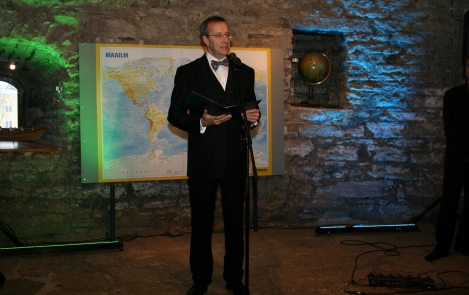-
Reset
+


President Toomas Hendrik Ilves at the opening event of Gulf of Finland Year at the Estonian Maritime Museum in Tallinn on 10 February 2014
10.02.2014
It is my pleasure to greet you all here upon this, the opening of the international Gulf of Finland Year 2014.
For those of us who live along its coastline, the Gulf of Finland is our shared sea. It is in all of our interests to maintain and protect it; to ensure that its waters are clean and that its beaches are beautiful. Declaring 2014 'Gulf of Finland Year' is an important step in reminding people of this and taking action to guarantee it.
It is those of us who live on the shores of the gulf that are first and foremost responsible for it. It is the task of Estonia, Finland and Russia, before all others, to ensure that the environment in which we live remains untainted.
Not that this means we should eschew human activity on the shores of the gulf. On the contrary: I hope that communication between us across the water only grows, and that the gulf connects us ever more to our neighbours. We need to promote and support human activity on our coasts and at sea, which to some extent has waned over time due to periods of occupation. But we also have to assume responsibility for these activities, preserving – rather than depleting – the natural environment of our sea.
The aim of Gulf of Finland Year is to foster trilateral cooperation between Estonia, Finland and Russia so as to improve the environmental status of the gulf. In order for us to be able to do this more effectively, scientists from all three countries are working together to determine its current status, and at the end of the year they will present proposals on how to enhance it by 2021.
The last time our region marked Gulf of Finland Year was almost two decades ago, in 1996. At that time the focus was on raising awareness of environmental threats. In the intervening years all three countries have made investments to improve the condition of the gulf's waters, turning particular attention to the purification of household and industrial waste water and the treatment of hazardous waste.
In the last 10 years Estonia has contributed more than 600 million euros towards improving the state of the water in the Gulf of Finland. We have reconstructed and modernised water treatment plants, eliminated residual pollution and closed waste disposal sites. A lot has also been done to reduce industrial pollution in north-eastern Estonia: for example, we have closed the Sillamäe waste disposal site, which was situated right on the gulf and which was responsible for almost a third of the nitrogen pollution generated in Estonia and pumped into the Gulf of Finland.
Significant steps have been taken in terms of protecting the marine environment as well, for which our thanks go out to everyone who has contributed. Today the gulf is in much better condition than it was twenty years ago. But a lot of work remains to be done that demands the attention, and the cooperation, of the countries on the shores of the gulf.
We also need to turn our attention to pollution on land which ultimately finds its way into the sea via rivers. The threat of oil spills is likewise high. Almost 200 million tonnes of oil and petroleum products are transported along the Gulf of Finland every year, and considering its more limited depth, it is beginning to rival the Molucca Sea and the Strait of Hormuz as one of the most heavily burdened bodies of water in the world in terms of crude oil transport. The risk of accidents is one faced by everyone who lives on the Baltic Sea, but especially the three countries that border the Gulf of Finland, which is why it is up to us to do everything we can to prevent such risks from ever materialising.
Further growth in shipping traffic is forecast on the gulf; existing ports are set to be expanded and new ports constructed; the number of cables, pipes and other structures on the sea bed is on the rise; and maritime and coastal tourism is also seeing an upward trend. It is important for us to chart the impact that all of this has and to think about how we can boost human activity without it irreparably damaging our vulnerable marine environment.
During this Gulf of Finland Year a new measure joining the research currently being undertaken will be the involvement of people living on the shores of the gulf in raising awareness of and seeking solutions to environmental problems. This is the reason we and our colleagues from Finland and Russia supported the idea of the Gulf of Finland Year and are acting as its patrons.
For my own part may I congratulate the people behind the Gulf of Finland Year in all three countries for making such an invaluable idea a reality. I wish all of you here many hours of substantial and inspirational debate. I hope you all – scientists, researchers, decision-makers, officials and activists alike; everyone who is helping to maintain and protect our sea – enjoy a full and fruitful year. The future of our sea is in your hands – in the hands of us all.




